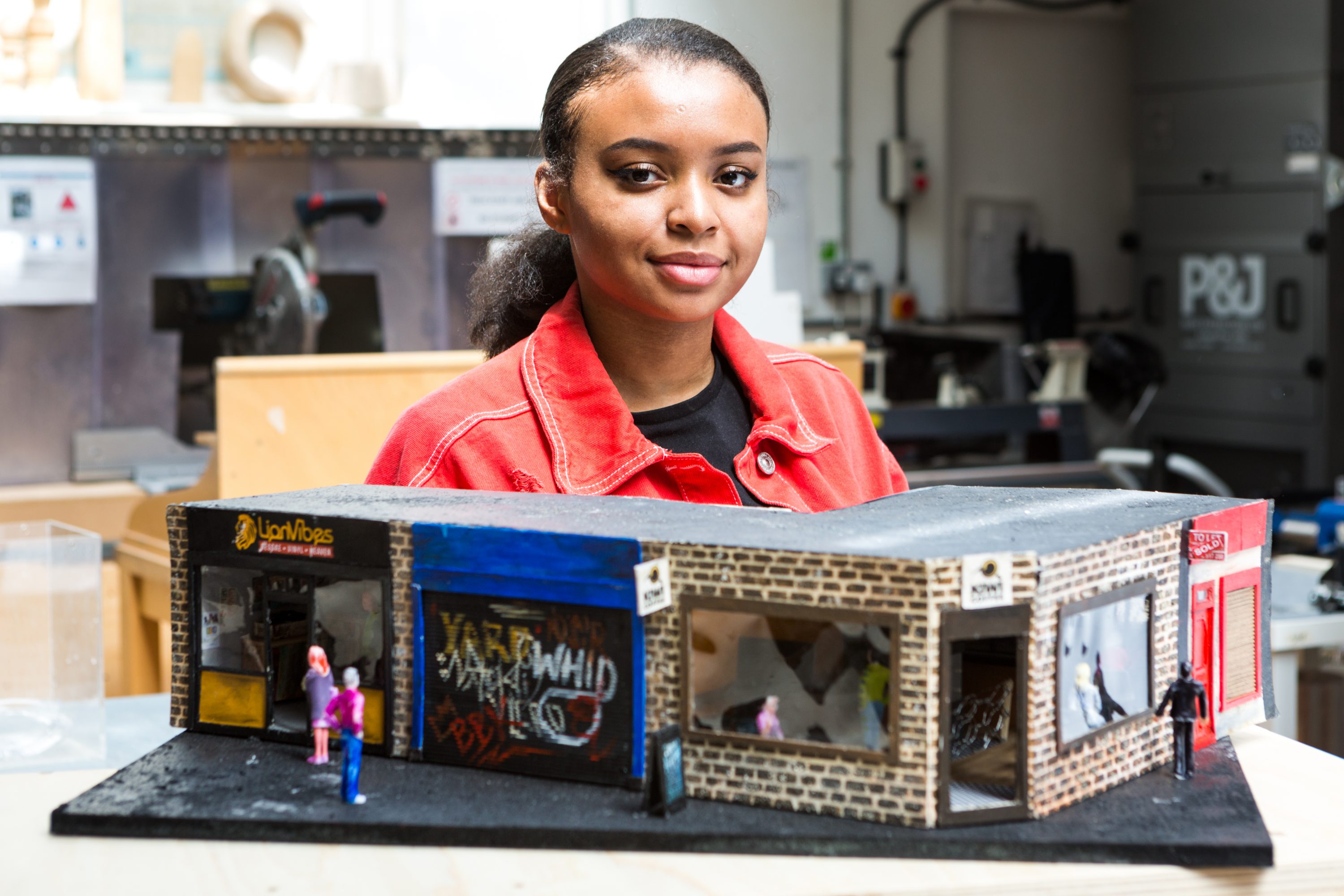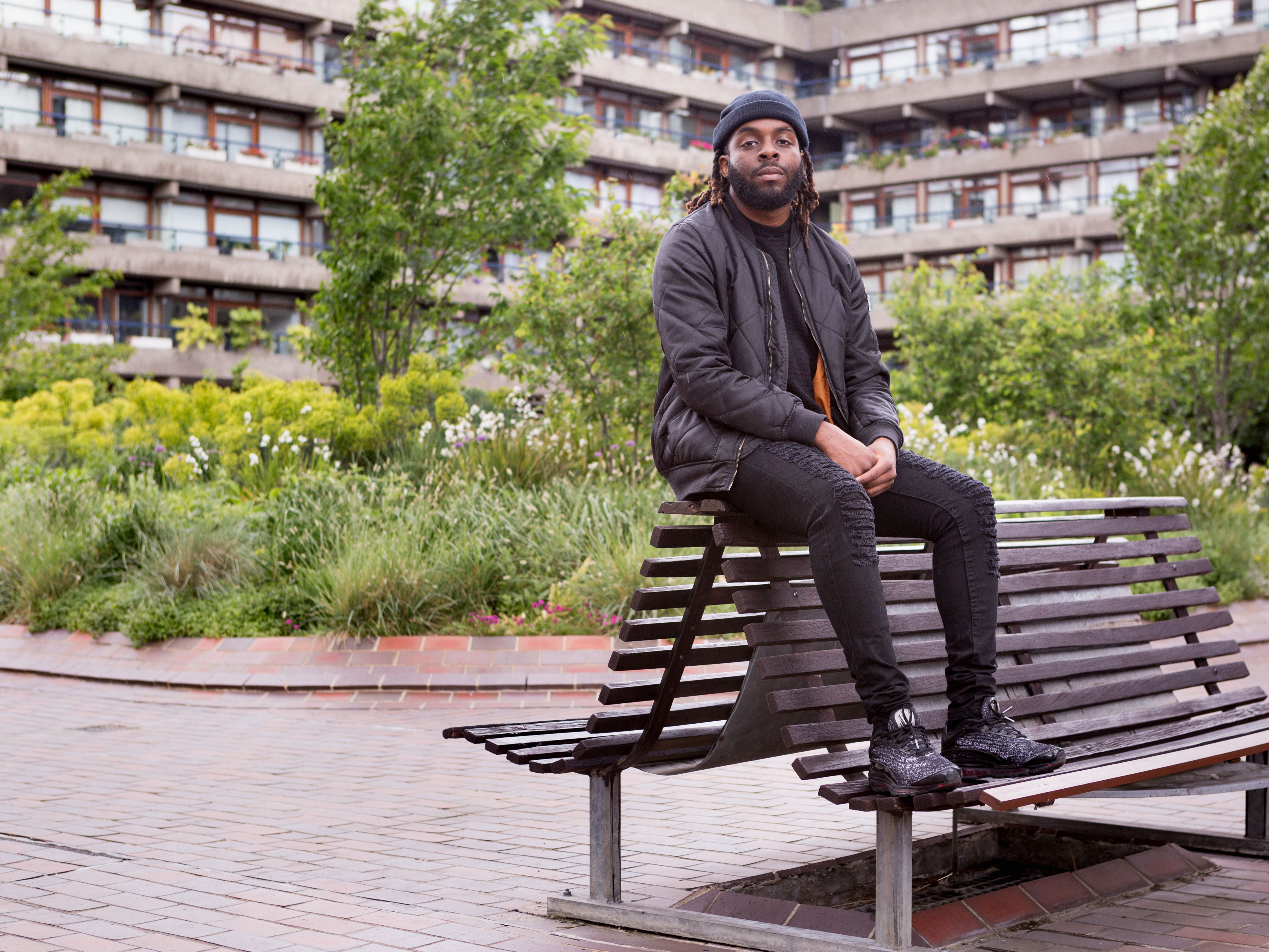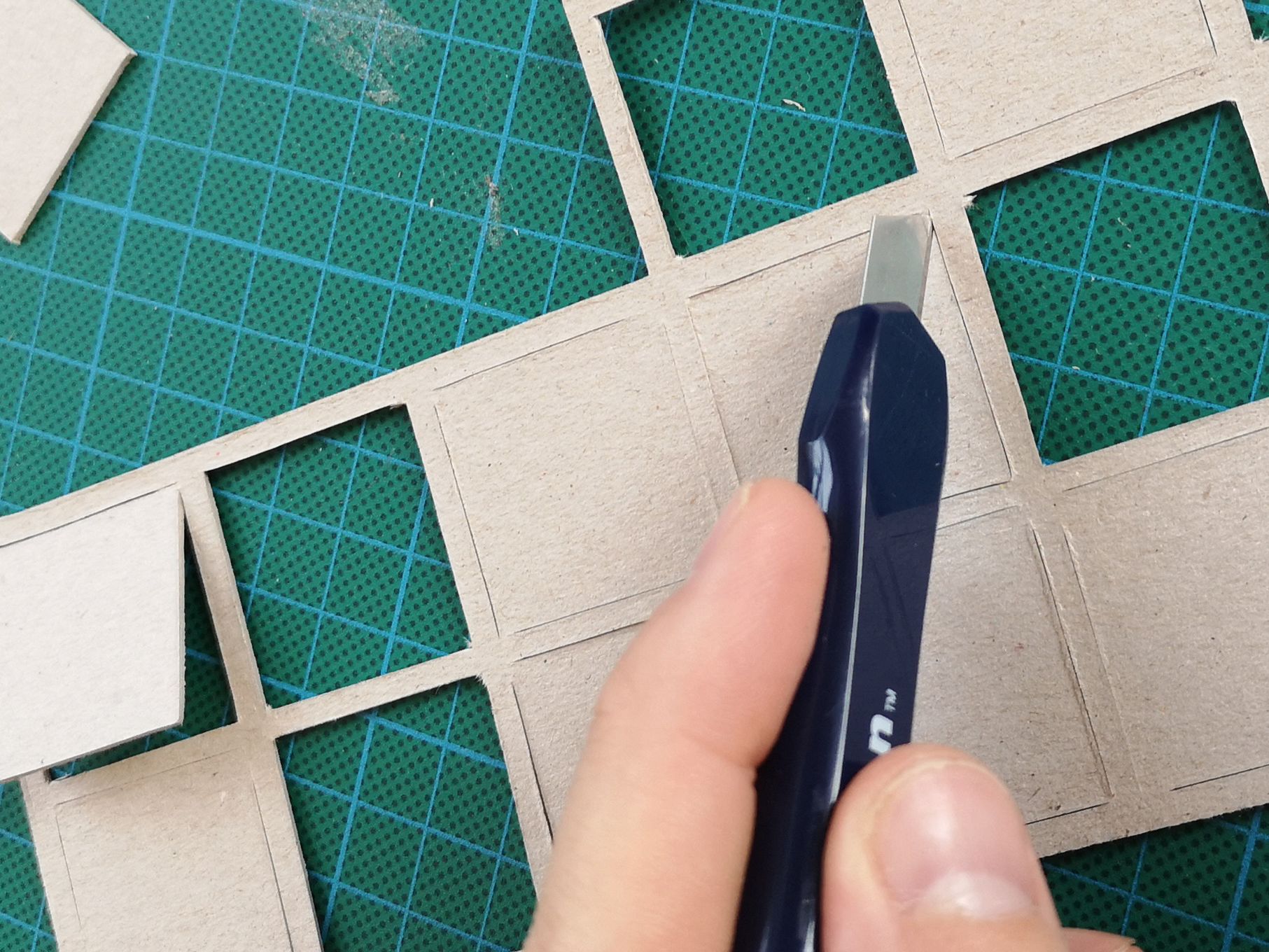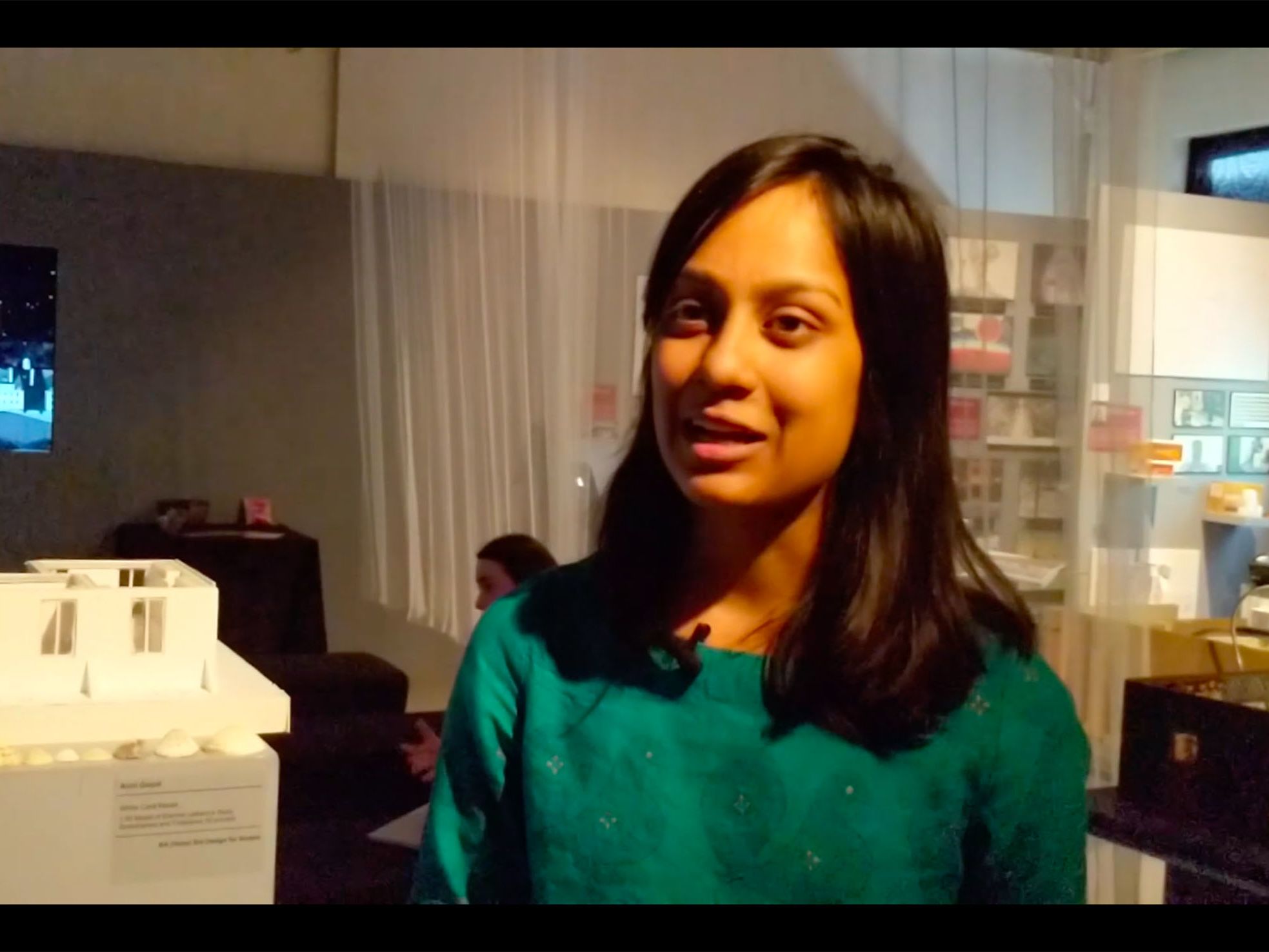About me
Tell us about yourself
I went to Brentside High School for sixth form. I did a Level 3 Extended Diploma in Art and Design, A Level Textiles and AS Level Graphics. I’m now at UAL and have just completed the foundation – specialising in design for theatre, screen and performance. My work is pretty to the point and has meaning in more ways than one – it depends on the viewer’s perspective.

Did you know right away what type of creative you wanted to become?
I studied textiles for most of my school years and I honestly thought I was going to be like a textile designer, go to uni and study fashion design or visual merchandising. It kind of played the same part in wanting to be a set designer so I think that’s one of the reasons I went down the set design route.
I used to watch all the shows on TV like Grand Designs. I think that’s why I chose 3D and spatial as a specialism on foundation before moving into design for theatre, screen and performance. I had always been passionate about (that type of) design, but it wasn’t for me in the end. The tutors were good at helping me work out what to do. I’m slowly ticking off things I don’t want to do.
What’s the biggest truth or myth about studying theatre and performance?
People say that you’re not going to act, but they do chuck you in the deep end! But it’s nothing uncomfortable, we all get along really well. As designers, we don’t want to be actors, this is why we chose the design pathway. But it’s about understanding how a performance works and how it works in the industry. It makes sense, there’s no avoiding it, you have to understand it.
Truths? Everyone’s here for the same reason, we all want the same things so it’s easy to work together, like team work. You definitely learn from each other.
What have you achieved from studying the foundation?
It’s built my confidence, it’s allowed me to manage my time a lot better. I love working in groups now – although I’ve always enjoyed it I feel like in this environment I’ve loved it even more.
If I had the choice, I would have gone back and done the diagnostic (where you try out all subject pathways). But honestly, specialising didn’t throw me into a blender, it just led me closer to what I wanted to do.

My work
What are you working on right now?
I’ve just finished my set design model for an urban opera based in Brixton. I’d tried to make models before but I feel like they weren’t so successful. By the end, it’s been my best piece so far so I feel like I’m only going to get better. You kind of pick up the trade as you go really. You learn the purpose materials. When I was making the bricks it took four trials, how to get the lines straight, what material to make it look a bit rocky.
What’s the best thing you’ve done so far?
Going down to Wimbledon College of Arts to use their theatre space. We put on a performance for a piece that we all worked together on as a group. We made a costume or a prop for an immersive, collaborative two-week project inspired by the painting of Hieronymus Bosch, ‘The Garden of Earthly Delights’. It was fun to work out all the ideas with four other girls, no ideas were pushed aside. We started off with a design for an oyster then we made it into a clam to show feminism. The pearls were its children. It emphasised the lust that men crave. I really enjoyed working on the performance.
What do you think makes you a good creative?
Being able to give and take feedback. Everyone has an opinion and whether you want to say it, everything is valid. It depends on how you say it. Telling someone what you liked about their work and what could be improved is very valid, just like taking feedback and not taking it to heart, no one’s being malicious.
Being able to work together, brainstorm, push the boundaries and using a wide range of materials for your designs is also important.
Any top tips for surviving foundation?
Don’t just settle in one project group, definitely branch out and make as many friends as possible outside of your specialism because if they were like a graphic designer they could make your wallpaper for your interior or set design.
Enjoy yourself, I think people can stress themselves out way too hard. But definitely give 100 percent, show up. I noticed that when I wasn’t in I’d miss a lot. Speak to your tutors, they are a great help, even the technicians in the workshops, be open.
Go to loads of exhibitions and see London, get ideas to inspire your work, everything’s around you to inspire you.








